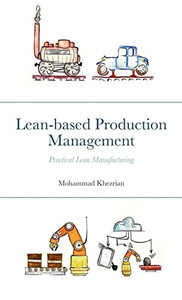Achieve any cost goals in half the time to stable production with quality designed in -- Do it right the first time Design for Manufacturability: How to Use Concurrent Engineering to Rapidly Develop Low-Cost, High-Quality Products for Lean Production, Second Edition is the definitive work on DFM - this second edition extends the concepts to the most advanced product development process with the addition of the following new, unique, and original topics that have never been published before. It clearly shows you how to: Cut cost from 1/2 to 1/10 in nine categories with ways to remove that much from product cost charges and pricing. Commercialize innovation -- starting with manufacturable research and learning from the new scalability section how to design products and processing equipment to scale quickly to any growth levels. Design product families that can be build "on-demand" in platform cells that also mass customize products to-order. Use an updated chapter on "designing products for Lean production" to make Lean production easier to implement with much more effective results while making build-to-order practical with spontaneous supply chains and eliminating forecasted inventory The author's 30 years of experience teaching companies DFM based on pre-class surveys and plant tours is the foundation of this most advanced design process. It includes dozens of proven DFM guidelines -- through up-front concurrent engineering teamwork that will cut in half the time to stable production, and curtail change orders for ramps, rework, redesign, substituting cheaper parts, change orders to fix the changes, unstable design specs, part obsolescence, and late discovery of manufacturability issues at periodic design reviews. This edition is for the whole product development community and: Engineers who want to learn the most advanced DFM techniques. Managers who want to lead the most advanced product development. Project team leaders who want to immediately apply all the principles taught in this book in their own micro-climate. Improvement leaders and champions, who want to implement the above and ensure that the company can design products and versatile processing equipment for low-volume/high-mix product variety. The concepts help companies avoid substituting cheap parts, which degrades quality, and encourage standardization and supply chains that encourage Lean initiatives. In addition, companies can use cellular manufacturing to shift production between lines for mixed production of platforms and build-to-order to offer the fastest order fulfillment that can beat any competitors' delivery time.
- | Author: David M. Anderson
- | Publisher: Productivity Press
- | Publication Date: May 27, 2020
- | Number of Pages: 542 pages
- | Language: English
- | Binding: Hardcover
- | ISBN-10: 0367249944
- | ISBN-13: 9780367249946





